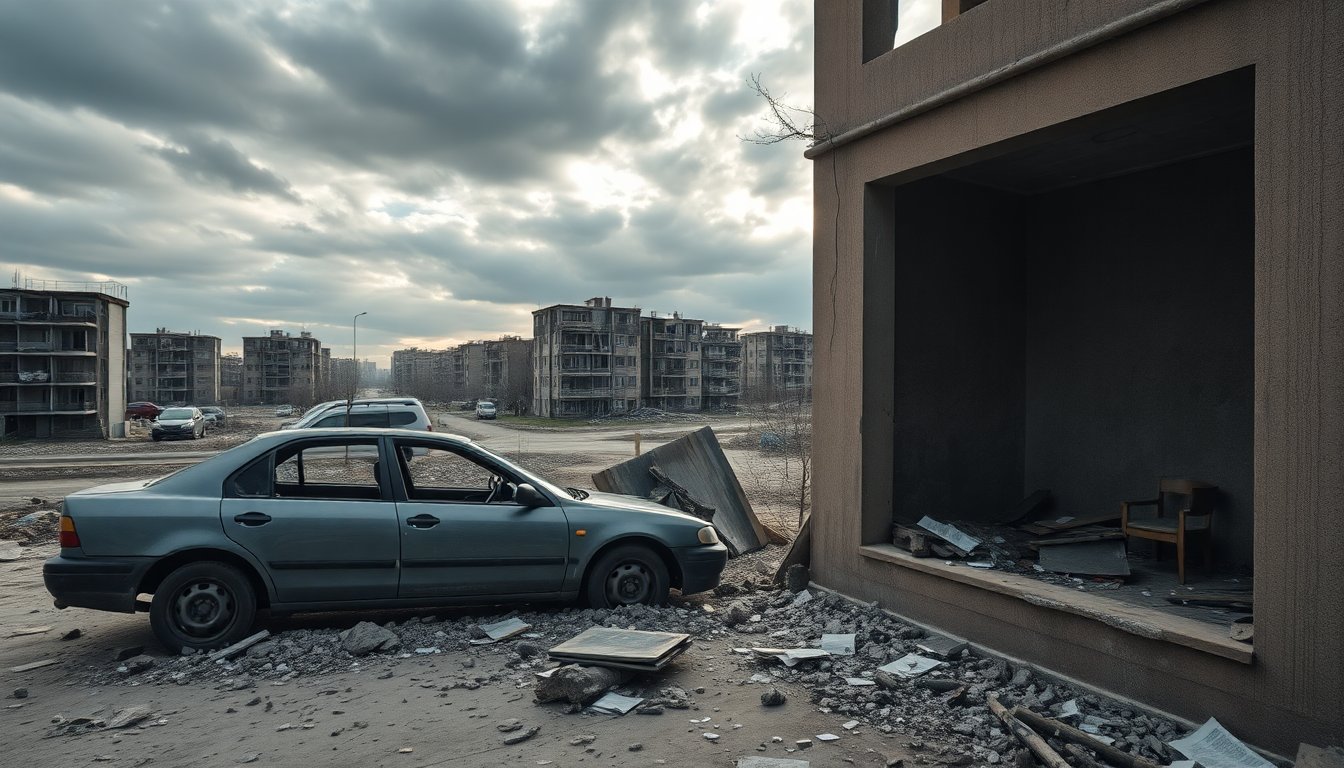Table of Contents
In February 2025, the world witnessed the beginning of a tumultuous chapter in European history as Russian troops marched into Ukraine. Alongside the initial military maneuvers, reports surfaced detailing widespread looting in towns that fell under Russian control. From personal residences to cultural institutions like museums and theaters, a shocking array of items—including food, clothing, and appliances—were pilfered, exposing the ruthless nature of Moscow’s invasion.
However, the fallout of this conflict extends beyond the borders of Ukraine, as evidence is emerging that the Russian military has also perpetrated these acts of violence against its own citizens.
One grim illustration of this internal chaos occurred on November 5, 2025, when Russian soldiers apprehended Alexey Kostrikin, a soldier who had committed heinous crimes including murder and sexual assault against a local family in Belgorod.
Kostrikin is among a staggering number of over 170,000 violent offenders recruited from prisons and detention centers to bolster the ranks of the Russian military in Ukraine. Reports indicate that he is just one of over 1,130 ex-convicts who returned from the front lines only to revert to their former criminal lifestyles.
The alarming rise of looting in border towns
The investigative journalism outlet 7×7 has closely examined social media communications directed at regional governor Vyacheslav Gladkov. Their findings revealed a disheartening pattern: 78 distinct messages detailing looting incidents were submitted by concerned citizens in the Belgorod region within a span of three years.
Many of these individuals had to persistently voice their concerns, often repeating their accounts multiple times to elicit any response from authorities.
First-hand accounts of looting
Residents of Novaya Tavolzhanka, a border town, began reporting in June 2025 that their abandoned homes, left behind to escape the dangers of Ukrainian artillery, had been occupied by Russian soldiers who were engaging in systematic looting.
As documented by journalists, images circulated online depicted vandalized properties, with items such as televisions and radiators removed and valuables piled up, seemingly poised for transport.
Local residents like Mikhail Proshutinsky sought help from various governmental agencies after learning that uniformed intruders had taken residence in his evacuated home.
After navigating a convoluted bureaucratic maze, the military prosecutor’s office eventually confirmed the eviction of the soldiers, yet no subsequent action was taken, leaving Proshutinsky without any recourse or compensation for the damages incurred.
Bureaucratic hurdles and the fight for justice
Many individuals facing similar predicaments have described their struggles with bureaucratic red tape, often feeling as though they were being passed from one agency to another without resolution. In October 2025, a woman named Maria reached out to Governor Gladkov on behalf of residents from Krasny Khutor and Novaya Naumovka, expressing frustration that local police had neglected to investigate looting incidents due to the ongoing conflict. Despite these claims, the regional administration has maintained that military police and volunteer units are tirelessly protecting the border towns.
The fear overshadowing conflict
For many civilians residing near the front lines, the threat of looting by Russian soldiers has become a more pressing concern than potential Ukrainian attacks. Some have chosen to remain in their homes despite the dangers posed by shelling and the scarcity of essential supplies such as food and medicine. The disparity between reported looting incidents and official investigations is stark; 7×7 documented that complaints about looting in Belgorod vastly outnumbered any news regarding investigations into these crimes.
Even when cases did reach the courtroom, offenders have often been charged with theft rather than more serious accusations related to the methods of warfare. It wasn’t until June 2025 that Governor Gladkov reluctantly acknowledged the problem of looting, pledging to enhance local patrols to safeguard citizens’ property.
Criminal activities within the ranks
In neighboring Kursk, authorities have opened around 200 cases involving looting, although the origins of these crimes remain unclear, particularly in distinguishing those committed by Russian soldiers from those potentially linked to Ukrainian troops. Local reports have indicated that police have taken action against some Russian soldiers for looting, with a handful of cases gaining media prominence.
One such case involved Dmitry Stenkin, who, in April 2025, brutally attacked a family in Giry, resulting in the mother’s death and injuries to the father, alongside the temporary kidnapping of their two young daughters. Although Stenkin was apprehended, the family expressed fears of a potential military cover-up of the incident. Like Kostrikin, Stenkin has a lengthy criminal history, having faced multiple charges for serious offenses over the years.





